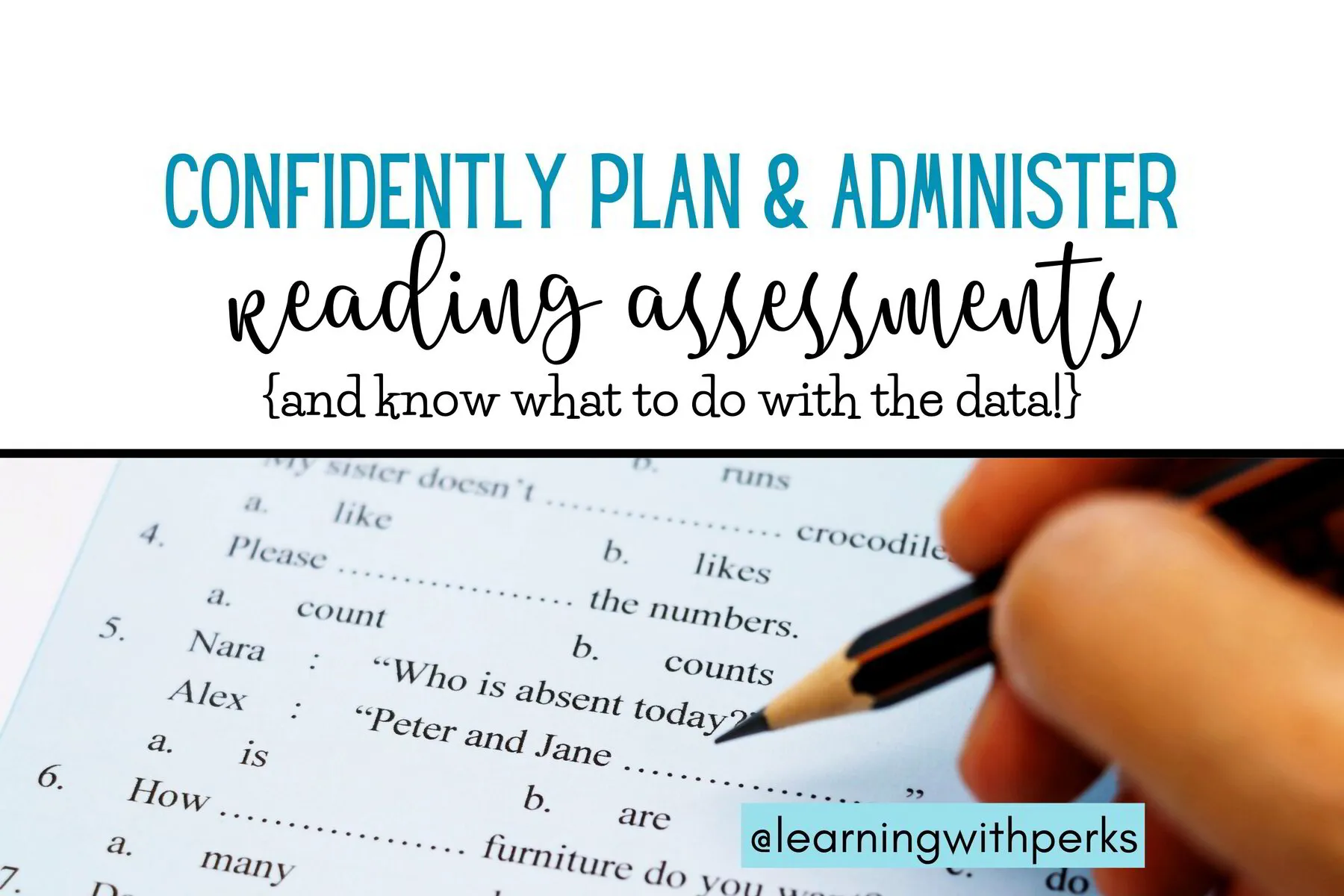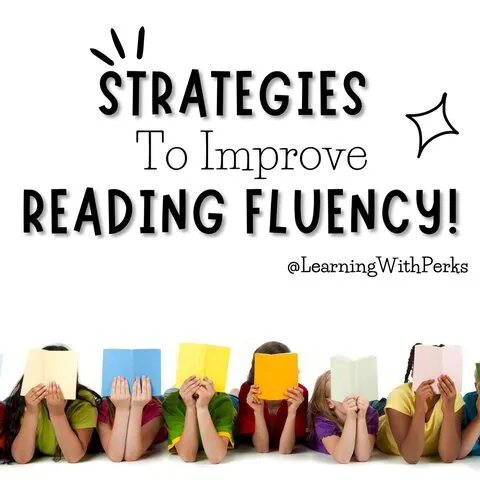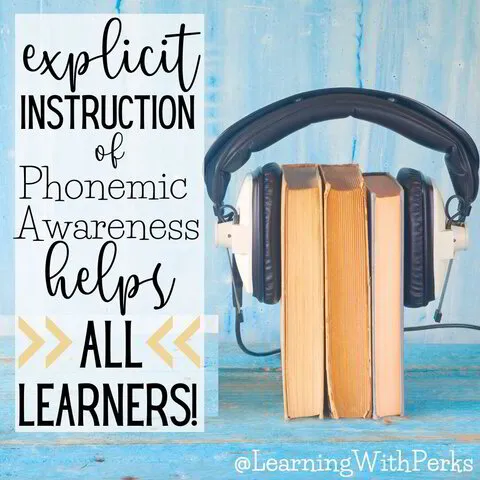Reading assessments - what is your first thought when you read that phrase?! Before your eyes start rolling or the panic sets in... read this post to learn how to effectively administer reading assessments to your whole class by following a few simple steps that will SAVE YOU TIME and give you assessment results that you can actually use in your planning and instruction.
Starting a new school year is bittersweet; last year’s class is officially gone - you know, the group that you put your blood, sweat & tears into (perhaps literally). You may be sad to see last year’s students go, or relieved to send them on their way, but either way there is one thing that stands true: by the end of the year, you KNEW your students. You programmed for them. Helped them to overcome challenges and talked with parents and problem solved and wrote all of their reports. So, it is sometimes a bit frightening to walk into a new school year knowing very little about your incoming students. Where are they at? Will the group jive as a class? What are the reading and academic skills like across your class list? And, how will this impact my teaching and planning?
After you have completed the important work of relationship building within the class, getting to know your students, and setting expectations, it is time to start planning your year in more detail. Even if you have taught the same grade or subject for ages, it is important to gain some knowledge of your students’ abilities so that you can be successful in delivering lessons and activities that are effective and meet the needs of your learners. I know - this is 1000% easier said than done, especially with the growing class sizes and complexities within classes (but that is a post for another day….!)
Administering and interpreting reading assessment data is so important. I am also here to argue that this information is important for teachers of ALL DISCIPLINES to know and understand this information…. not only for the English Language Arts teachers. Once you complete a comprehensive round of assessments, the data can be used to guide instruction, create student-groupings for activities, and give you an idea for targeted literacy instruction (& IEP goals if needed) that will benefit each of your students. If you do not have a plan and an idea of what assessments to use, this can be a daunting task and often is completed (or only partly completed), shoved in a binder and never looked at again until report card time. Let’s break that habit. Understanding the reading abilities of your students is essential to providing the best instruction possible in your classes.
First, it is important to understand the way that students learn to read so that your intervention can reflect the skills that will be most beneficial for each student. If you keep this in mind while interpreting assessment results, you can easily see where intervention needs to start. Here is a very quick overview of the skills needed in order to achieve excellent reading comprehension:
1) Phonemic Awareness [hearing and manipulating phonemes (sounds) in words]
2) Phonics [decoding; matching sounds to symbols (letters) within words and learning the predictable patterns]
3) Fluency [reading accurately, with a natural pace while attending to punctuation and using good expression]
4) Vocabulary [understanding root words, base words prefix/suffix along with tier 3 vocabulary words relating to specific subject or topic]
5) Reading Comprehension [the ULTIMATE GOAL of reading! Comprehension is made up of all of these reading skills, plus background knowledge & language comprehension. Look into Scarborough's Rope for more details on this!]
Now, you may be asking - "Where do I START with Reading Assessments?!" I think we all can agree that it is important SAVE TIME and work smart. Here is the key to ensure that your reading assessments are effective, informative and are not wasting time for you and your students: Start by assessing comprehension & Vocabulary, with a whole class screening tool. Now, I truly believe that you can not measure reading comprehension with one assessment. There are so many parts that need to come together to obtain good reading comprehension, and it would be impossible to capture it all in one test. The assessment that I use for this stage is the Dibels 8th Edition MAZE. It is an assessment that measures vocabulary and sentence understanding. The Maze assessment is organized by grade level from grade 2 - grade 8. It is an excellent whole-class screening tool to give you information on which students will need further testing. Included in the assessment downloads is a scoring guide and instructions that are very easy to follow. (Did I mention, the downloads are FREE??) The Dibels Maze is an assessment that is given to the whole class and takes only 3 minutes. Bonus - it is SUPER easy to mark. After marking the Maze assessment, student scores will fit into one of the four categories: Negligible Risk, Minimal Risk, Some Risk or At Risk. Below, I have summarized/rephrased what the 4 levels mean if you are using the Dibels 8th edition assessment:
Once you have completed and marked the Maze assessment, further assessments will focus on students that are presenting in the RED (at risk) category. Some teachers will also complete further assessments with students in the yellow to gain more information.
Take a look at the flowchart below to see which type(s) of further assessment would be needed, depending on student scores. This whole process will be demonstrated and described in detail in the video guides coming soon - DON'T MISS OUT! GET NOTIFIED WHEN THE VIDEOS ARE AVAILABLE (CLICK HERE)
By following this process of assessment in your class, you will be creating a bit of a funnel to identify students that need more intensive assessment. This saves you time and ensures that students are not being assessed on skills that they have already mastered. It also helps you know where to start intervention (if needed) and gives you a great starting point to develop and implement literacy goals for your students.
It will be important to use progress monitoring throughout the year for all of your students to be sure that they are receiving the instruction that will be most effective for their growth in reading. Save this post, share it, and come back to reference the Reading Assessment Flowchart!
Here are some excellent reading assessments that you can search for online, and many are available to be downloaded FOR FREE!
- Dibels 8th Edition - benchmarks, progress monitoring, includes Maze, ORF, decoding and phonics assessments
- Words Their Way Spelling Inventory
- Diagnostic Decoding Surveys from Really Great Reading
- CORE Phonics Surveys
- The PAST - Phonemic Awareness Screening Tool by Kilpatrick
- Q-PAS - Phonemic Awareness assessment
Let me know in the comments - will you try out any of these tips for effectively using reading assessments in the classroom? Follow along on Instagram & Facebook - I would love to connect!
YES! Please NOTIFY ME when the







